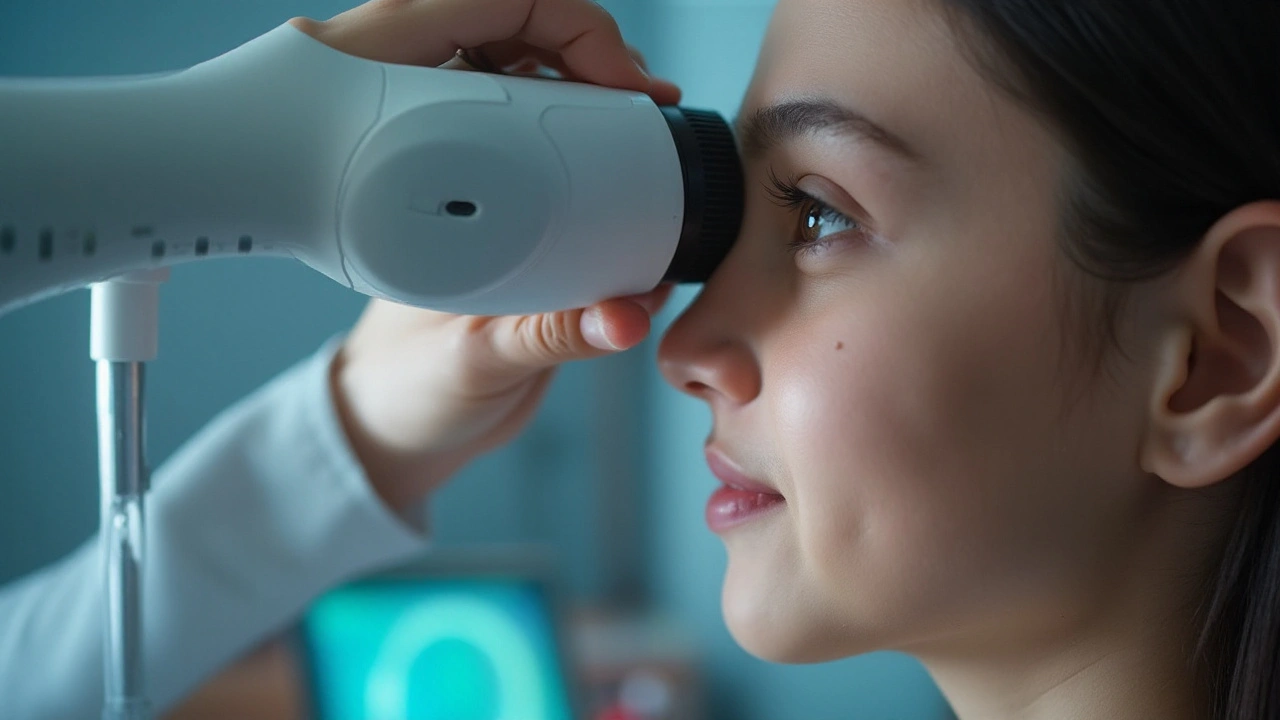Optic Nerve Imaging: What You Need to Know and Why It Matters
Ever wondered how eye doctors catch serious vision problems before they get worse? That’s where optic nerve imaging steps in. This simple test gives a detailed look at your optic nerve—the crucial cable sending signals from your eyes to your brain. Eye issues like glaucoma, optic neuritis, or damage from diabetes all show up in the optic nerve way before you notice blurry vision. With optic nerve imaging, doctors can spot these changes fast.
So what exactly happens during these tests? Usually, they’re quick and painless. The most common machine used is called an OCT (Optical Coherence Tomography). All you do is look into a lens while the machine scans your eye and makes a high-resolution map of your optic nerve. No poking, no prodding, and you don’t even have to get your eyes dilated most of the time. The whole thing wraps up in less than 10 minutes.
Why go through with it? Early clues of glaucoma, swelling, or even rare nerve conditions aren’t obvious in routine eye exams. Imaging picks up what the naked eye can’t see, catching tiny changes before you feel any symptoms. That can buy you years of better vision and take the guesswork out of serious decisions about medication or surgery. If you have a family history of glaucoma, diabetes, or unexplained vision loss, your doc might recommend getting scanned regularly.
Don’t stress about the process or the results. Your doctor will walk you through the images and explain if anything looks off. If something does show up, you’ve got the jump start you need—we’re talking early, actionable info that helps you and your doctor choose the right next steps, whether that’s close monitoring, meds, or a specialist referral.
And it’s not just for older adults or folks with diagnosed conditions. More young people with vision changes or unexplained headaches are getting scanned too. Why? It’s fast, safe, and gives real answers. You might even see clinics offering these scans as part of routine vision checkups, just to be sure nothing is sneaking up on you.
Bottom line: optic nerve imaging is a straightforward way to keep tabs on the health of your eyes—especially the stuff you can’t see or feel yet. You walk away with a clear picture and peace of mind. If your eye doctor suggests one, it’s for a good reason. Getting checked early can make a world of difference.

Advanced Optic Nerve Imaging for Glaucoma Diagnosis & Control
Optic nerve imaging plays a pivotal role in the early diagnosis and ongoing monitoring of glaucoma, a condition that can lead to irreversible blindness if untreated. This article delves into the methods and technologies used in optic nerve imaging, explains its importance, and offers tips on how patients and healthcare professionals can make the most of these tools.




